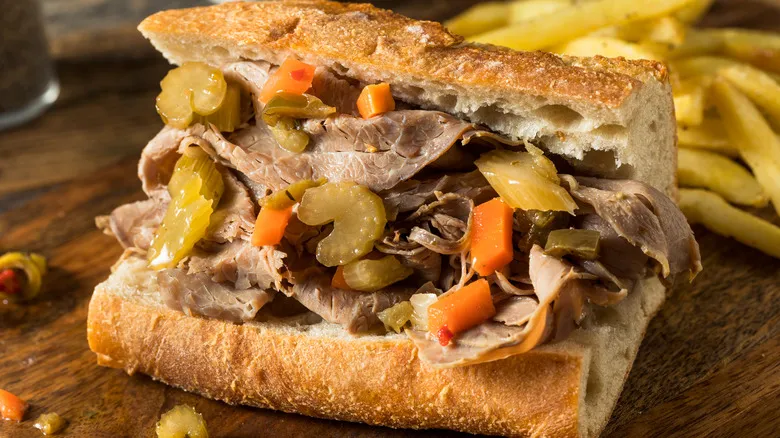Old World pepperoni is made with a natural casing

The distinction between Old World pepperoni and other varieties primarily lies in the type of sausage casings used. Most pepperoni is encased in synthetic materials, such as cellulose or plastic, which are not edible. As a result, these casings are removed before the pepperoni is sliced and served. In contrast, Old World pepperoni is encased in natural casings made from submucosa, a collagen-rich layer derived from animal intestines. Natural casings can come from sheep, cows, pigs, or goats.
Unlike synthetic casings, natural casings can be consumed along with the pepperoni. This means that each slice of Old World pepperoni retains its natural casing. Many people believe that this casing is responsible for the characteristic cupping of Old World pepperoni, which is partially true, but there’s more to the story. J. Kenji López-Alt from Serious Eats found that the true reason natural casings create the cupped shape is that they do not stretch like synthetic casings. As a result, when the sausage is stuffed, the meat is packed into a unique "U" shape, similar to what you would see if you cut a slice of cupped pepperoni in half. Therefore, the way the meat is packed into the casing contributes to its cupped appearance, and you can achieve a similar cupping effect even if you remove the casing from Old World pepperoni.
Old World is not an accurate name

You may be curious about the origin of the name "Old World pepperoni." As you may recall from your history lessons, "Old World" pertains to the eastern hemisphere, while "New World" refers to the western hemisphere, specifically the Americas. The term "Old World" in Old World pepperoni alludes to the birthplace of pizza, Italy, contrasting it with the flatter version of pepperoni found in the New World. However, there is a catch with this designation: Old World pepperoni was not actually created in Italy; it originated in the New World.
This might be surprising, but there is no true pepperoni in Italy. While there are similar cured sausages, such as soppressata, nothing is specifically labeled as "pepperoni." In reality, this beloved pizza topping was developed in New York in the early 1900s by Italian immigrants who, unable to find all the ingredients from their homeland, had to reinvent traditional foods, including sausages, using New World ingredients. One key ingredient was paprika, which imparts the characteristic dark red color to pepperoni. Paprika is derived from bell peppers, known in Italy as "peperone." Thus, all pepperoni can be considered New World pepperoni, but the Old World designation comes from its use of natural casings, reminiscent of the traditional sausages from Italy.
Recommended

What Is Pilaf And Why Do We Only Seem To Use It For Rice?

How The Italian Beef Became A Chicago Icon

Georgia Doesn't Actually Produce The Most Peaches In The US

Watergate Salad Has Nothing To Do With The Scandal, So Why Is It Called That?
Next up

